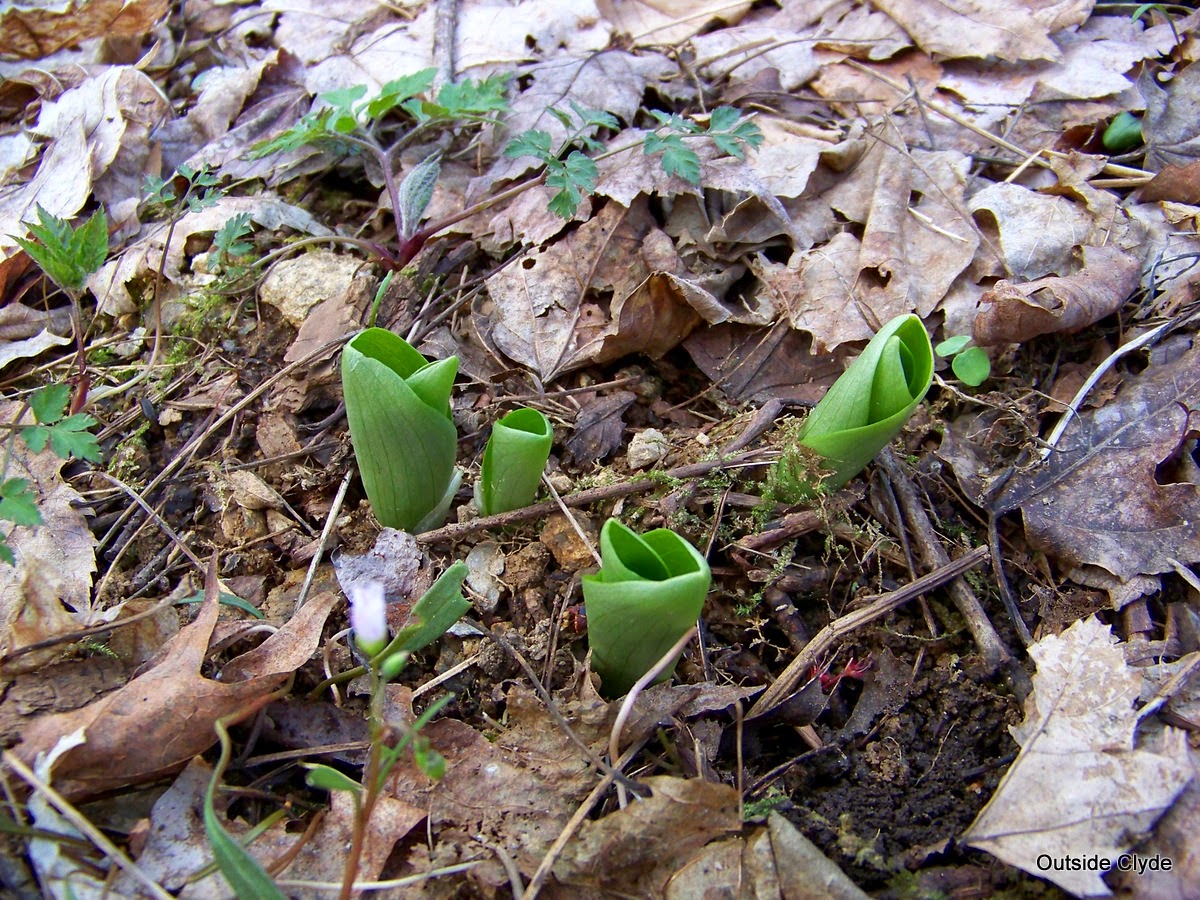Barring unforeseen circumstances, you always expect your plants to be happy and grow. Multiplication of your plants is even better and a sign that they are happy. A couple of muscari bulbs stuck in the ground years ago are becoming fat clumps. In a few more years seedlings off in random places should start to bloom.
Every year the store bought yellow trillium came up after the first I looked around to see if there were any babies. Finally, this year there are two. At this already large size I'm thinking the bulb has divided. I'll take it, anything that makes more.
Bloodroot makes more without any help from me. I just have to try not to dig it up and plant something on top of it.
My blooming weeds are quite good at making more. One big spot of hillside is entirely purple right now. Good thing I'm not a lawn fanatic.
Last year when I transferred the Showy Orchis to its new home in the garden it was one plant. Now it is four. Obviously the transfer went well.
This unknown, it may be a lily or it may be an orchid, followed me home last year. It was in a place that was regularly being run over with a lawn mower, covered with mulch or sprayed if it was sighted as a foreign green object. I rescued it.
Last year it was two. Now it is three. Maybe it will bloom this year and I will find out what it is.
I did dig up and move some of the raisin sized and looking bulbs of the anemone and move them into my garden. I may move some more if the time presents itself. It is a delicate operation. The stem coming out of the bulb is the size and limpness of string. You have to be very careful.
I only need a few to survive. After that they seem to go wild on their own just fine.
Daffodils get a little help at making more with division. Bulbarella is already marking clumps to dig and spread around.
I have spotted quite a few teeny tiny babies around these trilliums. Should I let them get a litttle bigger before I transfer a few?
The multiplication of all the tiny minor bulbs and spring ephemeral wild flowers can put on quite the show in early spring when the forest is still barren. We need more.
And we need to recognize when nature is doing exactly the same and let it be. The giant rock is covered in Dicentra in the spring.
There are two kinds. Dicentra canadensis and D. cucullaria.
Subscribe to:
Post Comments (Atom)


















4 comments:
Is pic#9 also known as "Dutchman's breeches"?
Incorrect.....I meant pic#12...sorry.
D. cucullaria is called Dutchman's Breeches and D. canadensis is called Squirrel Corn.
They are all pretty.
Post a Comment